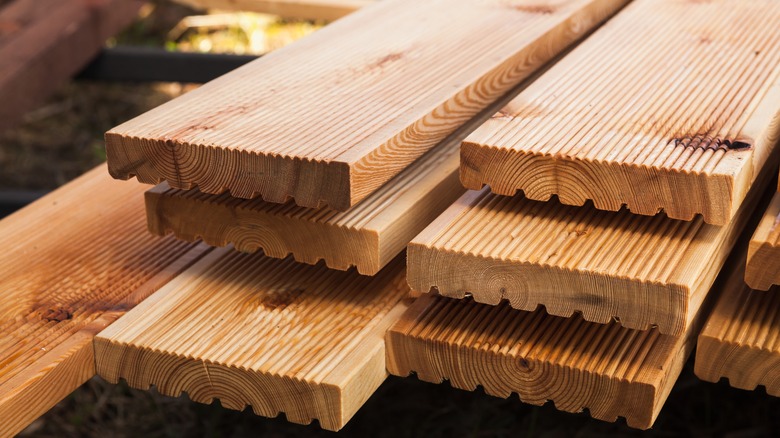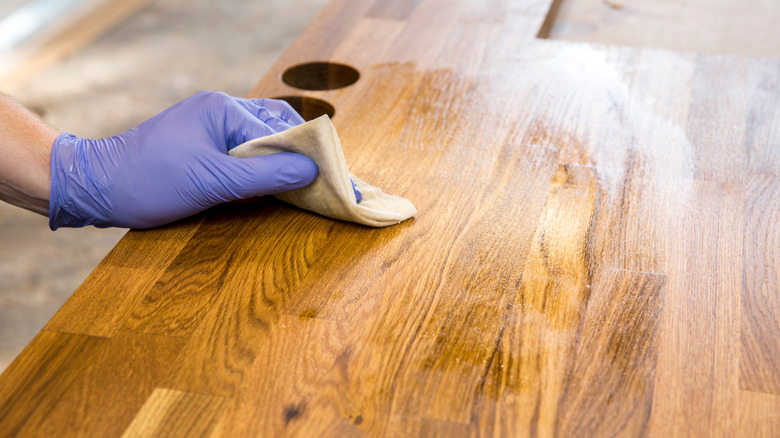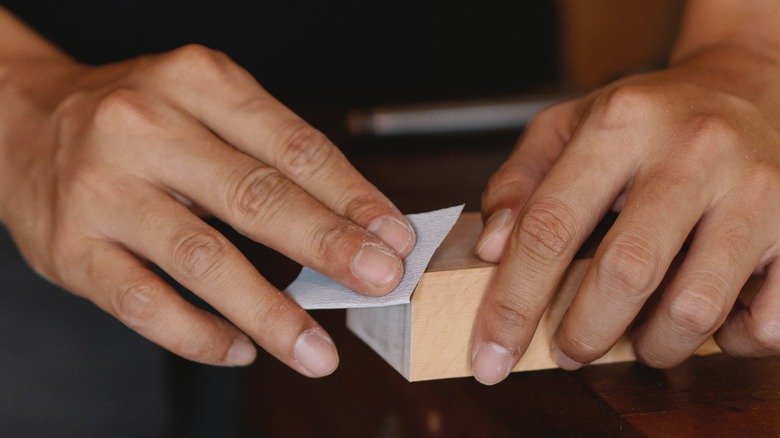When Should You Use Liquid Sandpaper Instead Of Sheets?
While traditional sanding sheets have long been the go-to choice for many, liquid sandpaper is an alternative method. Also known as a liquid sander or deglosser, this tool offers a different approach to surface preparation than its sheet counterparts. Rather than using abrasive material, liquid sandpaper utilizes a chemical solution to dissolve and soften the existing finish. This solution can be applied with a cloth, sponge, or brush — making it highly versatile for reaching tight corners and intricate surfaces that may be challenging with sanding sheets.
The use of liquid sandpaper may be more suitable than sanding sheets in certain situations, depending on the project's nature and requirements. For instance, deglosser excels in tasks that involve removing old finishes from various surfaces. Its fast-acting formulation saves valuable time by efficiently stripping away layers, allowing quicker progress and minimizing dust and debris. However, there are instances where sanding sheets are still the preferred choice. For example, sanding sheets offer greater control and coverage when working on large, flat surfaces. They are also ideal for smoothing uneven or heavily damaged surfaces that may benefit from more aggressive sanding.
Situations favoring liquid sandpaper
Liquid sandpaper is generally most effective on surfaces with relatively smooth finishes. For instance, it's excellent for preparing a wooden piece for painting, staining, or restoring antique furniture. The chemical solution can dissolve minor imperfections and create a cleaner surface, ready for the next step in the project. However, if the surface has deep scratches, gouges, or other significant imperfections, it may be necessary to use sanding sheets to level it.
Deglosser also offers a significant advantage when working on furniture or cabinetry with intricate designs and carvings. Its liquid form penetrates the tightest corners and detailed areas, removing the old finish without damaging the wood's delicate features. Liquid sandpaper removes multiple layers of paint, stain, or varnish from large surface areas. Its fast-acting formulation makes the process more efficient, saving time and effort compared to using sanding sheets alone. When restoring delicate or antique items, it provides a gentler approach than abrasive sanding — minimizing the risk of damaging delicate surfaces while effectively removing old finishes.
Advantages of sanding sheets
Sanding sheets offer several advantages that make them indispensable in certain sanding situations. When working on expansive and flat surfaces like floors, countertops, or walls, they offer efficient and uniform material removal. Their larger size allows for swift coverage, making them a time-saving option. Also, sanding sheets excel at leveling uneven surfaces. On surfaces like rough wooden planks or damaged walls, sandpaper sheets remove the high points to create a smooth and even surface.
When precise control and tactile feedback are essential, sanding sheets allow you to feel the surface and make adjustments accordingly. Sanding sheets are available in various grits, ranging from coarse to fine — enabling you to choose the level of abrasiveness needed for the task. If a project involves significant material removal or requires a more aggressive approach — such as stripping old layers of paint or removing heavy varnish — sanding sheets with coarse grits are the preferred choice.


